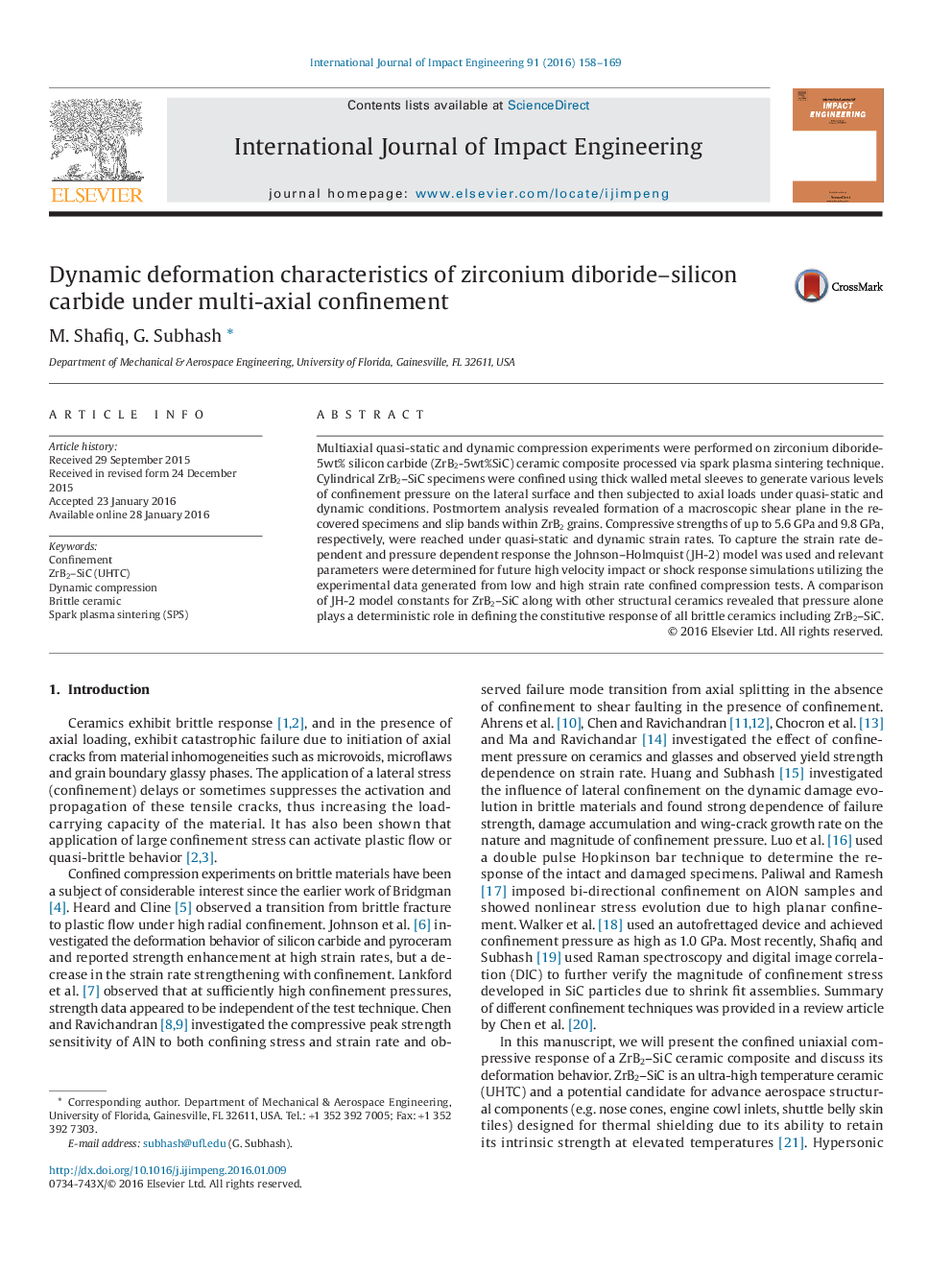| Article ID | Journal | Published Year | Pages | File Type |
|---|---|---|---|---|
| 782804 | International Journal of Impact Engineering | 2016 | 12 Pages |
•The manuscript examines the quasi-static and high strain rate failure behavior of a polycrystalline ultra-high temperature ceramic, zirconium diboride–silicon carbide (ZrB2–SiC), processed through spark plasma sintering and confined using thermally shrink-fit metal sleeves.•The subsequent plots revealed an increase in failure strength under low to moderate confinement and the possibility of macroscale plastic dislocation activity in the bulk ceramic when sufficient pressure is applied.•In addition, the intact strength of ZrB2–SiC was determined utilizing Johnson and Holmquist (JH-2) model, and the relevant parameters are determined for high velocity impact or shock simulations.•The model constants also revealed that pressure alone plays a deterministic role in defining the constitutive response of all brittle ceramics including ZrB2–SiC.
Multiaxial quasi-static and dynamic compression experiments were performed on zirconium diboride-5wt% silicon carbide (ZrB2-5wt%SiC) ceramic composite processed via spark plasma sintering technique. Cylindrical ZrB2–SiC specimens were confined using thick walled metal sleeves to generate various levels of confinement pressure on the lateral surface and then subjected to axial loads under quasi-static and dynamic conditions. Postmortem analysis revealed formation of a macroscopic shear plane in the recovered specimens and slip bands within ZrB2 grains. Compressive strengths of up to 5.6 GPa and 9.8 GPa, respectively, were reached under quasi-static and dynamic strain rates. To capture the strain rate dependent and pressure dependent response the Johnson–Holmquist (JH-2) model was used and relevant parameters were determined for future high velocity impact or shock response simulations utilizing the experimental data generated from low and high strain rate confined compression tests. A comparison of JH-2 model constants for ZrB2–SiC along with other structural ceramics revealed that pressure alone plays a deterministic role in defining the constitutive response of all brittle ceramics including ZrB2–SiC.
